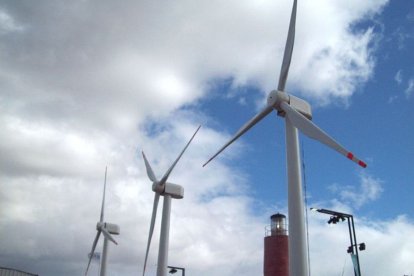Americans' rebellion against renewable energies grows and ruins Biden's plans
The president's goal is for the United States to abandon the use of coal and natural gas by 2035, something that many local governments oppose.

Wikimedia Commons
Joe Biden reiterated on several occasions, including in the latest State of the Union address, that his goal is for the United States to be 100% reliant on renewable energy by 2035. As 60 % of the energy consumed by Americans currently comes from fossil fuels such as coal and natural gas, alternative energy production should increase exponentially in the coming years. However, as a USA Today analysis revealed, local governments are putting several roadblocks in the way of the president’s goal.
It turns out that Biden’s goal is only possible if alternative energies, such as nuclear, hydroelectric, solar, and wind, expand into territories where they currently don’t exist. Therefore, although the advances of the last few years were significant, 2035 still seems a long way off from the current numbers.
Counties vs. renewables
According to USA Today, 15% of the country’s counties bear the brunt of this responsibility. These local governments have begun to directly hinder the construction of wind and solar farms. These obstacles come in the form of outright bans, moratoriums, construction impediments and other conditions that impede the construction of green energy projects.
While 15% of counties may seem like a very large number, the media outlet explained that the trend is discouraging for renewables. “USA TODAY’s analysis, backed by energy and academic experts, gauges which counties have effectively blocked or impeded new utility-scale wind and solar power. The findings reveal that 2023 was the first time the number of counties curtailing new solar installations was almost equal to the number of counties adding their first solar farm,” wrote the Des Moines Register.
Wind energy is the most concrete case among all renewables. Over the past decade, some 183 counties built their first commercial wind projects, while nearly 375 counties blocked new wind development.
“In 2009, 23 out of North Carolina’s 100 counties banned new wind projects. In 2014, Kentucky made it impossible to build new turbines in all 120 counties, and Connecticut did likewise in its eight counties. In 2017, Vermont did the same in its 14 counties. In 2018, Tennessee essentially stopped new wind projects in all but four of its 95 counties,” the media outlet added.
What are the reasons for these bans?
While the range of reasons is diverse, specialist David Blackmon said these industrial parks create “all sorts of negative consequences for local communities.”
In an opinion piece published in The Telegraph, he spoke specifically of the “loud noise from wind turbines, hundreds of dead birds and bats sprinkled across the countryside, thousands of acres of productive farm or ranchlands taken out of production for many years if not permanently, spoiled views, enormous ‘graveyards’ filled with 150-foot blades and solar panels popping up all over the place, and impacts to local wind and weather patterns that are only now beginning to be understood.”
Related to the expert’s writing, the USA Today analysis found that “much of the opposition is coming from local activists with no obvious ties to national groups” who perceive these negative aspects.
Others, who may share some of the above objections, prefer the taxation argument to oppose these projects. One such is Coedy Snyder, who resides about three miles from the proposed Oak Run solar farm in Madison County, Ohio. “I wouldn’t say we’re against renewable energy; I’d say we’re against it being imposed on us,” he said.
The aforementioned proposed power plant would be 6,000 acres and would generate enough power for 170,000 homes. According to its promoters, it could even provide $250 million in tax revenues over 35 years.
RECOMMENDATION





















